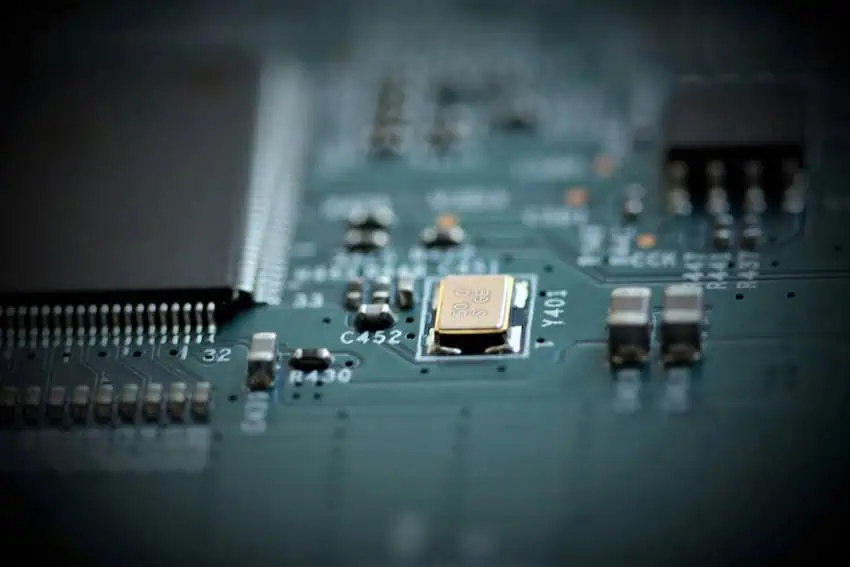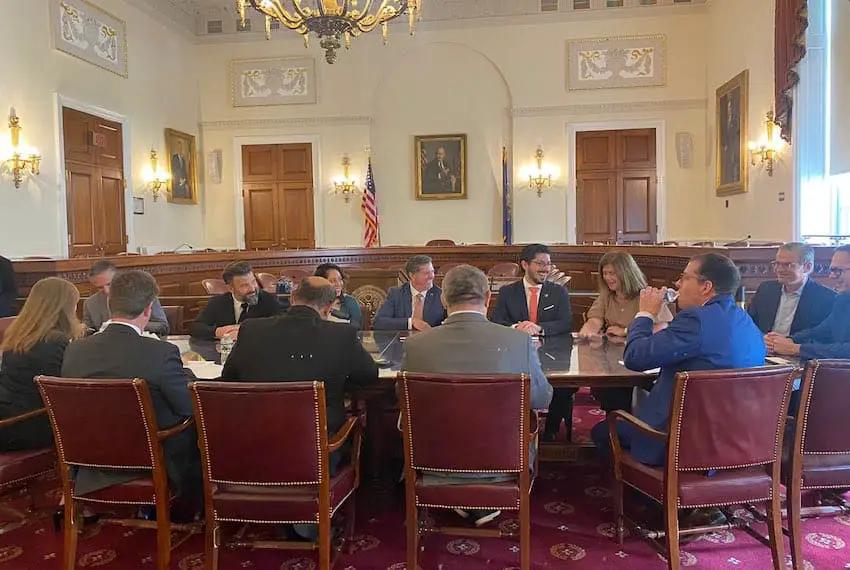Last October, Mexico and the United States launched a joint “semiconductor action plan” that aims to make North America the world’s “most powerful” chip-producing region.
In March, the United States announced it would partner with Mexico in a new semiconductor initiative to strengthen and grow the Mexican semiconductor industry.


And just this week, U.S. Secretary of State Antony Blinken said that Mexico will be one of three Latin American countries to initially benefit from the Western Hemisphere Semiconductor Initiative, a program supported by the US $280 billion CHIPS Act.
As a result, Mexico appears destined to become a significant player in the global semiconductor industry, which is currently dominated by Asian countries such as Taiwan, South Korea and China.
One person keeping a close eye on the developments — and involved in high-level discussions on plans for an integrated North American semiconductor ecosystem — is Pedro Casas Alatriste, executive vice president and CEO of the American Chamber of Commerce of Mexico (AmCham).
Mexico News Daily caught up with Casas while he was in San Francisco earlier this month to attend SEMICON West, North America’s premier microelectronics event.
What can you tell us about SEMICON West?
“SEMICON West is the biggest semiconductor investment fair in the world,” Casas said, explaining that 600 exhibitors from around the world were in attendance along with “more than 30,000 participants.”
“… Surprisingly enough there wasn’t any Mexican delegation coming here so we decided to take the lead and organize [one]” he said.
En @ConsulmexSFO celebramos el 1er “Nearshoring in Mexico Seminar” en el marco de #SemiconWest.
• 80+ pax interesadas en invertir en 🇲🇽 en semiconductores
• Presencia del Subsecretario Valverde y subsecretarios de múltiples estados @SE_mx
• @united anunció nueva ruta MTY-SFO pic.twitter.com/pBmj4D0PU3— Pedro Casas Alatriste (@PedroCasas) July 11, 2024
Casas told MND that AmCham put together a Mexican delegation of around 20 businesspeople and government officials from the states of Nuevo León, Chihuahua, Sonora, Jalisco, Baja California and Mexico City.
In a presentation, the delegates presented Mexico as a semiconductor investment destination and promoted “the qualities of the country … [in order to] incorporate ourselves much more in the semiconductor supply chain in North America,” said Casas.
The U.S. and Mexico announced a semiconductor partnership in March. What has happened since then?
“A lot of very interesting things” are happening, Casas told MND.
AmCham, he said, has already participated in two Mexico-U.S. semiconductor forums this year, one in Guadalajara and the other in Tijuana. The chamber, which aims to facilitate economic integration between Mexico and the U.S., will attend a third bilateral forum in Ciudad Juárez in October, Casas said.
U.S. and Mexican government officials, representatives of semiconductor companies and academics were among the attendees at the two previous forums, he explained.


At the Tijuana forum in mid-June, AmCham, the National Chamber of Electronics, Telecommunications and Information Technology and others presented to U.S. authorities “a master plan to make semiconductors a reality in Mexico,” he said.
“[We told them] here are our plans for labor and human capital, for training; here’s what we’re going to do to coordinate the participation of the private sector with academia … these are the areas of opportunity to invest… [and] this is how long it’s going to take for us to be a key player … in [semiconductor] designing,” Casas said.
Where do you think the North American semiconductor industry will be in five years?
“From what I’m seeing here at SEMICON and what I’m seeing in Mexico, I truly think we’re going to see an accelerated change in the region … because everything is now aligned,” Casas said.


“We have the political will, we have the economic opportunity, we have the incentives and we also have the pressing need [to act], not only economically but also in terms of national security and … [to reduce] dependence on a small number of players,” he said, referring to North America’s reliance on Asian semiconductor manufacturers.
“So everything is aligned to make this change fast. Basically what I see in five years is a very well-integrated supply chain with a clear vision toward the future,” Casas said.
In the not-too-distant future, Casas predicts there will be newspaper headlines highlighting “the North American success in semiconductors.”
You appear confident that Mexico has the capacity to support a much larger semiconductor sector. Is that the case?
“We’re right on the verge of not being capable of making the most out of this, but definitely we can,” Casas said.
“If we don’t do anything we won’t have the capacity. … Nonetheless, I do see ourselves making the right decisions, and hopefully with the new [Mexican] administration we can see an important change in terms of how we can better invest in the energy sector, water, security, rule of law and talent,” he said.
” … This is a historic opportunity for many reasons, and I see for the first time a clear alignment,” Casas said.
“… This is something that has bipartisan support, this is something that has regional support. From any angle you look at it, there is no reason to doubt that there is going to be an integrated North American supply chain” for semiconductors, he added.
The production of semiconductors requires a lot of water. Are you concerned about the establishment of semiconductor plants in Mexico when there is a shortage of water in some parts of the country?
Casas pointed out that the agricultural sector is the largest water user in Mexico by far, so “if we invest there, that’s where we’re going to see a huge change in water availability in our country.”
“The recipe is quite clear — we need to invest in technology so that we do not waste tonnes of water [in the agriculture sector],” he said.
Industry, which uses around 10% of available water in Mexico, “has very robust and sustainable [production] processes,” Casas said.
“… Technology is advancing at a very fast pace so I’m not worried” about the establishment of new semiconductor facilities in Mexico, he said.
By Mexico News Daily chief staff writer Peter Davies ([email protected])
* Mexico News Daily interviewed Pedro Casas earlier this year to introduce him to our readers.
Read Casas’s MND column on “four key opportunities for the North American economy” —including semiconductors — here.



